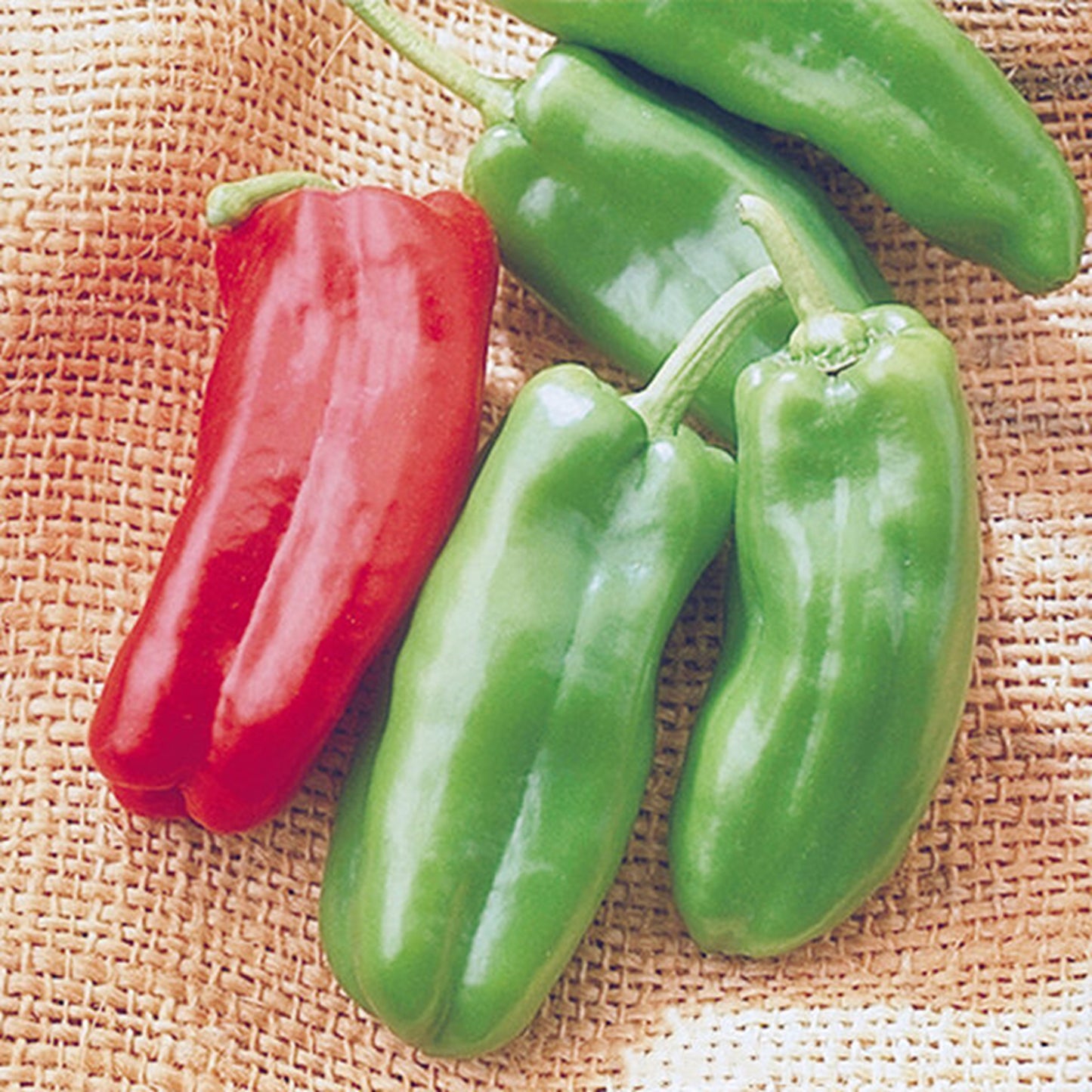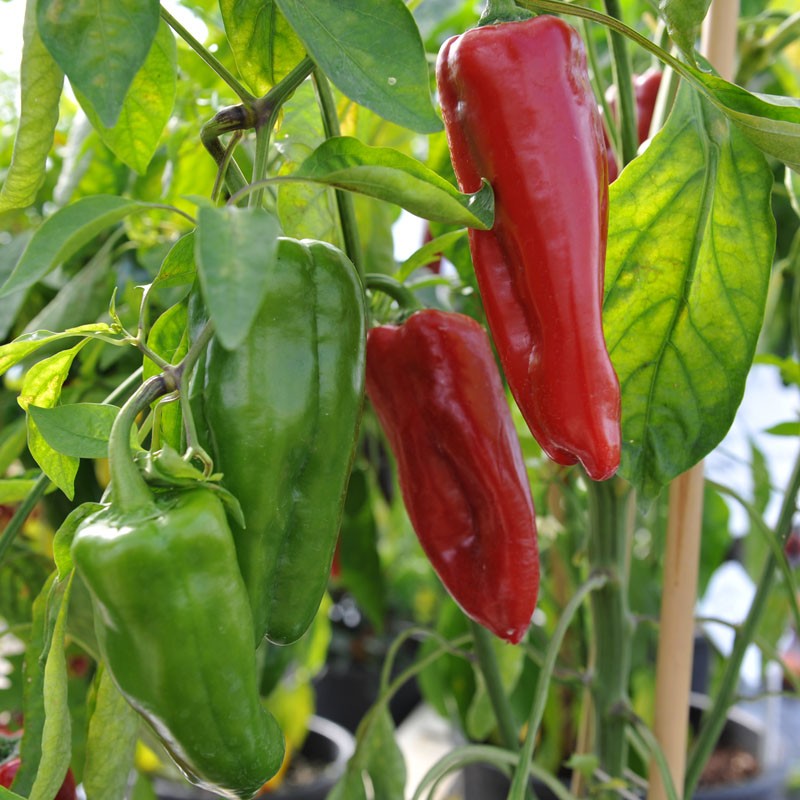Tyler Seeds
Marconi Giant Peppers
Marconi Giant Peppers
Couldn't load pickup availability
An Italian sweet pepper that lives up to its name, producing large 8” long fruits. The giant peppers have a smoky-sweet flavor and grow on tall 36“ plants. Giant Marconi is a strong producer, flowering and forming peppers through summer heat and humidity and right up until the first frost.
Giant Marconi has peak flavor when peppers color to a rich, bright red. The flavor is wonderful raw but is richer when grilled or roasted.
When to Plant Pepper Seeds
Peppers, both hot and sweet, are relatively simple to cultivate, but they do require patience. Most varieties take at least 85 days from sprouting to harvest. For optimal results, seeds should be started indoors about eight to ten weeks before the last expected frost date. In many climates, January is an ideal time for germinating hot pepper seeds, but starting as early as November or as late as February can also work. Germination rates are best when temperatures are at least 70°F.
Where to Plant Pepper Seeds
Peppers thrive in full sun and loamy, well-drained soil with a neutral pH. Although they are pest-resistant, they can be susceptible to mildews and therefore prefer a warm and dry climate. While pepper plants grow well in warm summer temperatures, many varieties produce their bulk harvest when nights become cooler.
Peppers benefit from nitrogen-rich soil, so planting them in plots where beans or peas were previously grown can create a beneficial crop rotation.
How to Plant Pepper Seeds
Begin by soaking pepper seeds in warm water overnight to speed up germination by penetrating the seed coat. When starting seeds, plant three seeds per pot and thin out the weakest seedling by pinching it off or clipping it with scissors, leaving two seedlings to grow as one plant. About two weeks before transplanting peppers outdoors, harden off seedlings and prepare the plot with fertilizer or organic material. Ensure soil temperatures are consistently at least 65°F with no risk of frost, as seedlings will not survive frost. Place seedling pairs approximately 18 to 24 inches apart. Peppers need a well-draining bed, but consistent moisture is also important—plastic sheeting, mulch, or drip irrigation systems are good options for retaining moisture. Peppers may require a stake or cage for stability as they begin to bear fruit. Some gardeners place a few match heads and a teaspoon of fertilizer in the hole before planting to grow hotter peppers, as hot peppers prefer sulfur.
How to Harvest Peppers
The harvesting time for peppers depends on the variety planted. Sweet varieties typically mature within 60 to 90 days, while hot peppers may take up to 150 days to mature. This information helps determine the ideal time to start seeds, which often falls in January or February.
For many hot pepper varieties, such as jalapeños, harvest time is indicated by the fruit's deep green color. Other hot pepper varieties like Cayenne, Serrano, Anaheim, and Tabasco mature after changing colors from green to orange, reddish-brown, or red. Picking peppers as they mature encourages continuous fruiting. Pepper production may decrease into the fall in colder climates but continues through winter in temperate climates.
Sweet peppers, including bell and banana peppers, are often harvested when the fruit is green but fully sized. For a sweeter taste, allow the pepper to ripen on the plant, transitioning through colors until reaching its final mature color. Cherry peppers vary in size and flavor and are harvested when they reach their peak mature color, which could be deep red, sunny yellow, or black.
Exercise care when harvesting peppers, as the branches are delicate and can break if tugged. Use hand pruners, scissors, or a sharp knife to remove the pepper from the plant. Take caution to avoid rubbing your eyes during this process. Wear gloves.



